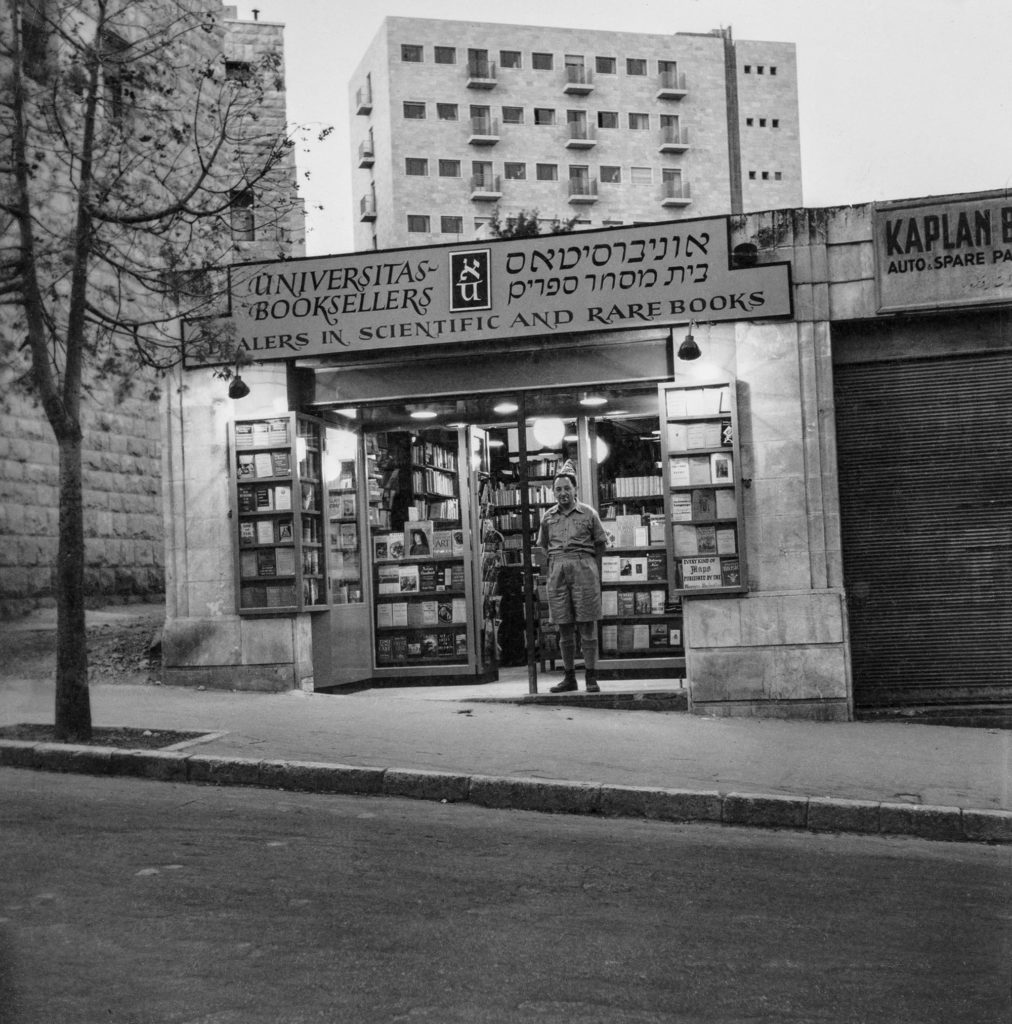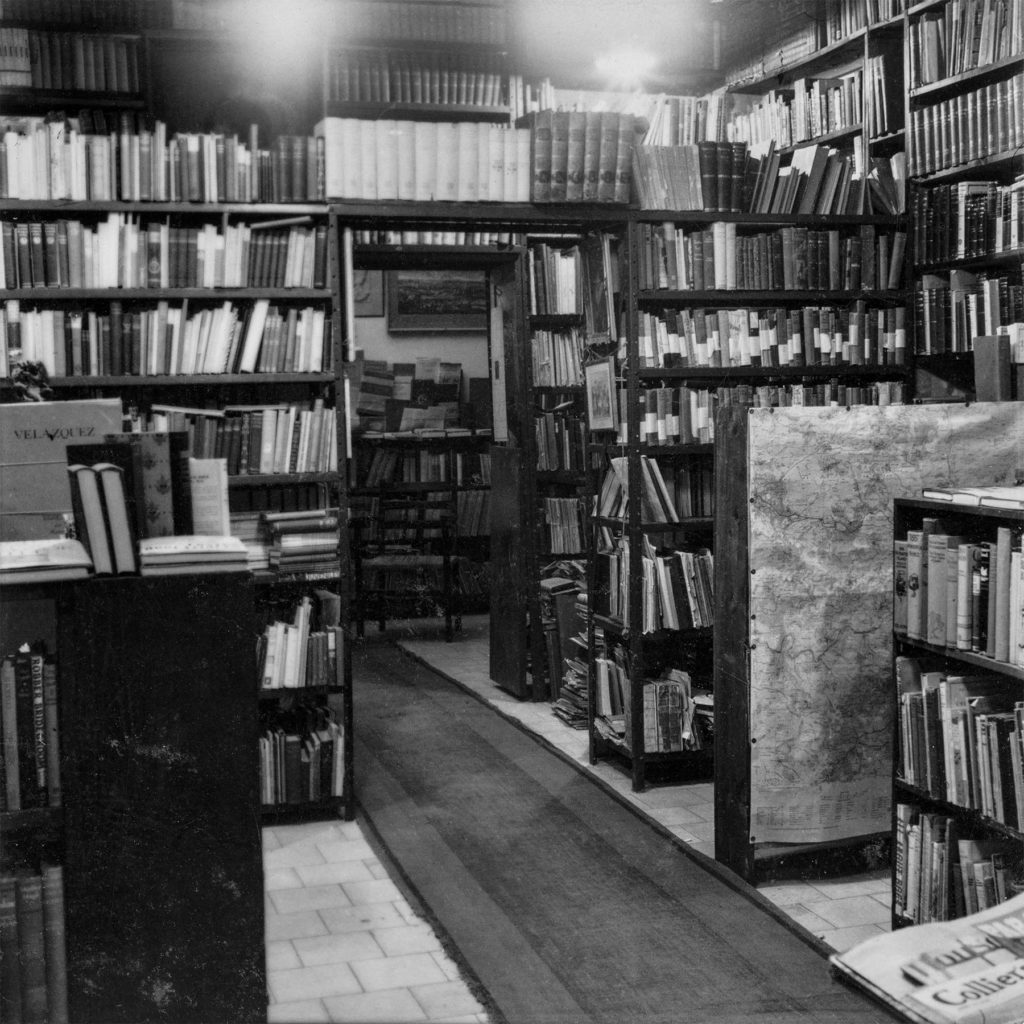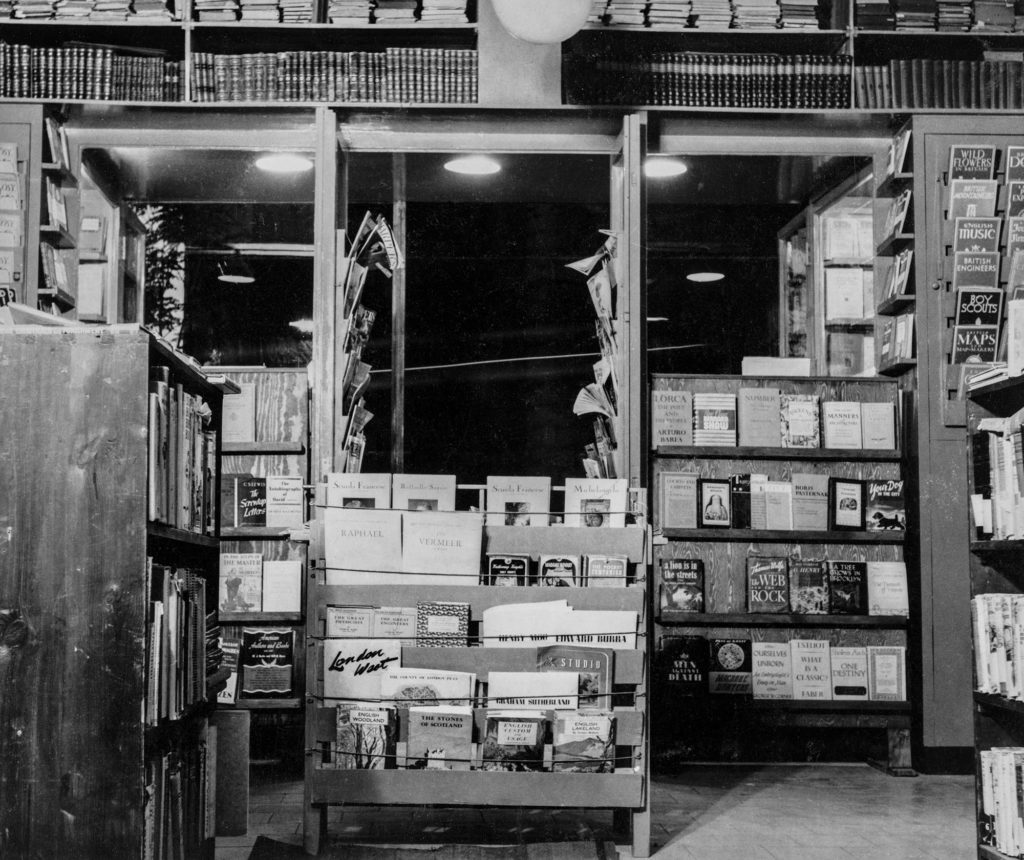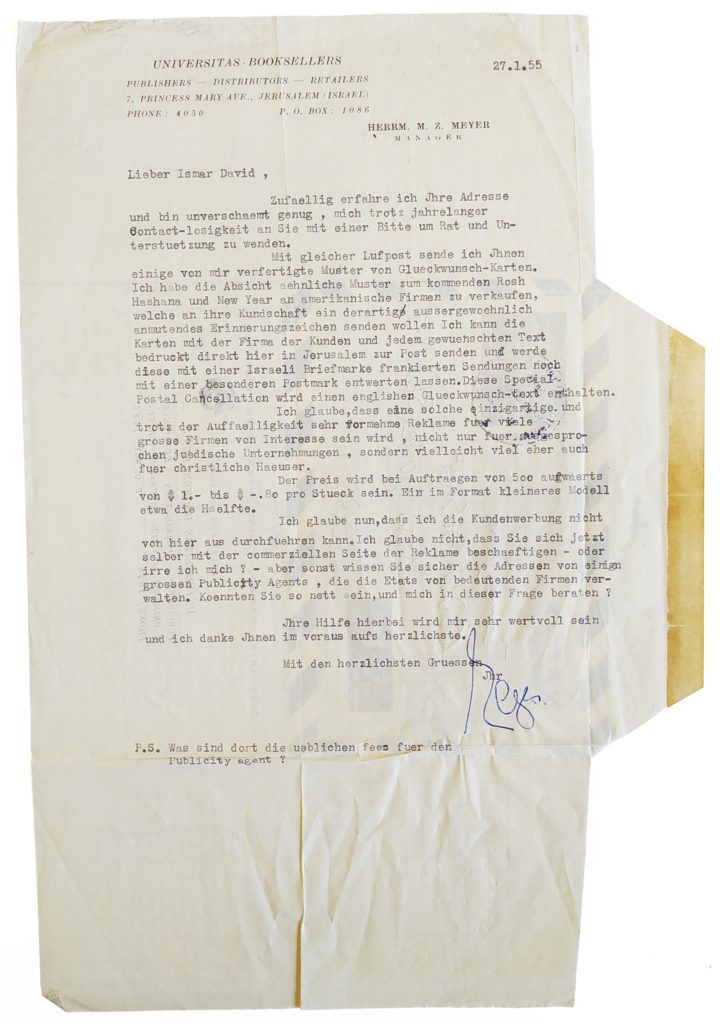Herrmann M. Z. Meyer, 1901–1972, bibliophile, collector, publisher, a founder of the Soncino-Gesellschaft in Berlin, proprietor of Universitas Booksellers in Jerusalem.
Berlin-born Herrmann M.Z. Meyer had already acquired a significant collection of books and graphics by the time he began his law studies at the Friedrich-Wilhelm University (today Humboldt University) in his home city. The twenty-three year old had the idea to create a society of friends of the Hebrew book and founded the Soncino-Gesellschaft with Abraham Horodisch and Moses Marx, both publishers. The first and only Jewish bibliophile society in Germany had over 800 members, including many institutions and 21 women, and published a journal. Its more than 100 published works encompassed a wide variety of literary content, including most ambitiously, a Hebrew Bible with a proprietary typeface. Meyer, its official secretary and behind-the-scenes editor, was considered its soul and driving force.
The political situation forced Meyer, his wife and daughter to leave Germany for France in 1934. An attempt at starting a bookstore in Paris failed and the family moved to Amsterdam. In 1935 they left Holland for Jerusalem, where Meyer opened Universitas Booksellers. A reporter for the Palestine Post described the 10, 000 books “on the floor, on shelves, benches and tables.”1Roundabout by the Postman,The Palestine Post, April 16, 1936, p. 6.
Dr. Meyer has been engaged in book collection for only 15 years, as he is still a young man. “How did you find so many rare gems in such a short space of time?” we asked. “One would expect you to have a long beard.”
“My beard grows inside my face” he responded. “And books have a way of coming from great distances to those who love them.”
Because Dr. Meyer does love them, his books tenaciously refuse to look like articles for sale. Thus his “shop” retains the air of a library. Hours pass like minutes when browsing through the rooms. One comes across the Divine Comedy of Dante printed in Venice in 1757 for the Empress of Russia, Petrowna. The four volumes are bound in parchment gone yellow.2Roundabout by the Postman,Ibid.
In 1936, Meyer moved his store to 7 Princess Mary Avenue, now Shlomzion ha-Malka Street. Ismar David designed various graphics for Universitas, as well as outdoor signage for the store in 1936 and for its renovation in 1946. He also designed a personal bookplate for Herrmann Meyer. In 1955 Meyer wrote to David.
21.1.55
Dear Ismar David,
I learned your address by chance and am shameless enough, despite being out of contact for years, to turn to you with a request for advice and support.
In the same airmail post, I’m sending you a few examples of greeting cards I made. I intend to sell something similar for the coming Rosh Ha-Shanah and New Year to American firms, who want to send their clients an acknowledgement like this that seems extraordinary. I can print the name of the firm and desired text directly here in Jerusalem and send them by mail with an Israeli postage stamp, validated with a special postmark. This special mail cancellation mark with contain a greeting in English.
I believe that such a unique, and despite its prominence, very distinguished advertisement would be of interest for many big firms, not just for markedly Jewish companies, but rather also much more for Christian business.
The price for an order of 500 is upwards of 80 cents to $1 to per piece. A smaller format, about half of that.Now, I believe that the canvassing for clients cannot be carried out from here. I don’t think that you are involved with the commercial side of advertising—or am I mistaken?—but otherwise you surely know the addresses from a few big publicity agents who manage the accounts of important firms. Would you be so kind and advise me in this?
Your help with this would be very valuable and I thank you most heartily in advance.Most cordially,
Your
Meyer
P.S. What are the usual fees for a publicity agent?





























